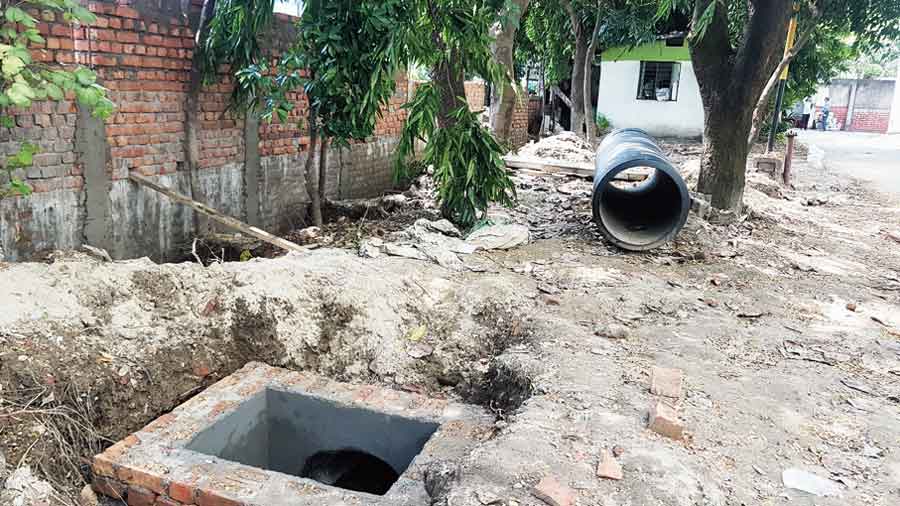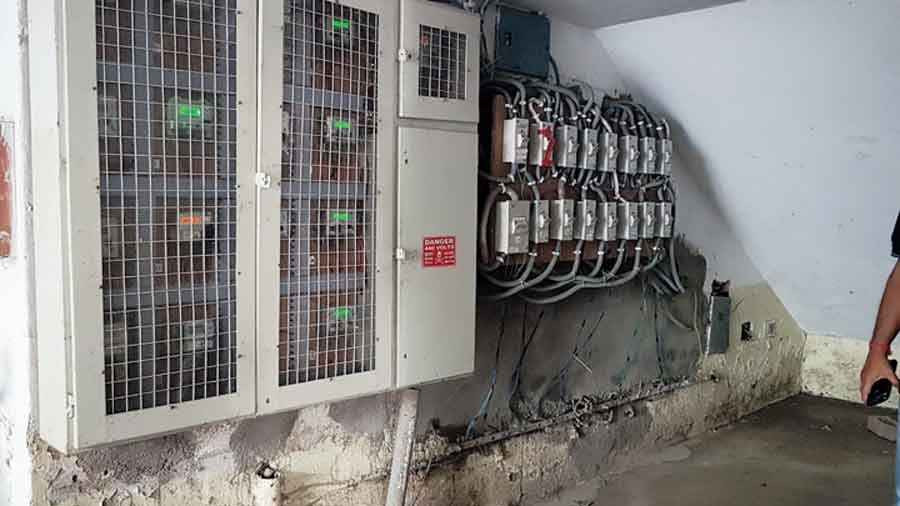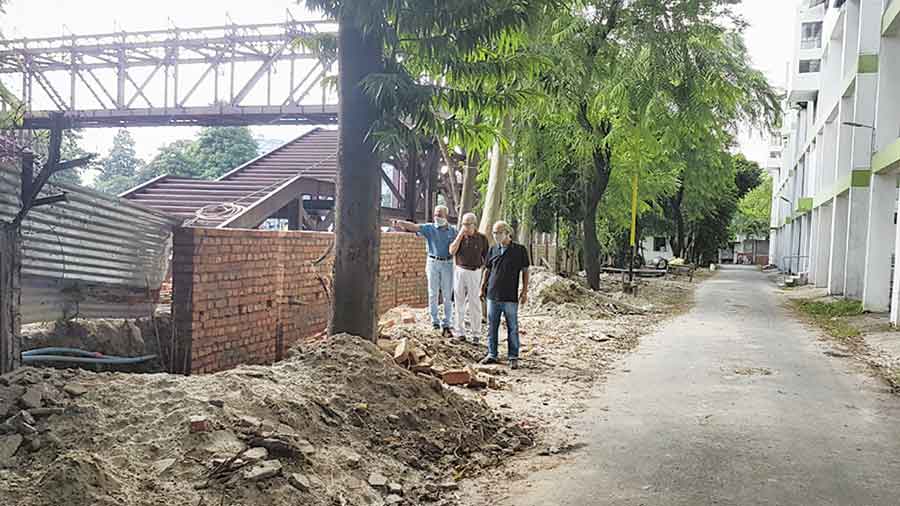Respite is in sight for residents of Jal Vayu Vihar in Salt Lake who have been suffering from water-logging all monsoon. Work has started on a new system of underground pipes that will guide the rain water in the area into the Eastern Drainage Canal that is adjacent to the complex.
Jal Vayu Vihar (JVV) is a co-operative society by naval and air force employees in Salt Lake Sector III. It lies at a corner of Salt Lake around the Chingrihata area. For the last few years, residents here have been suffering due to the construction of a pier of the Airport-New Garia Metro at their gate and recently because of the construction of a footbridge.
Once ready, this footbridge will connect pedestrians from the Salt Lake end to the Belegahata end over the EM Bypass. “But this bridge is being built right outside our wall, with only a gap of 4ft in between. This has several implications for us, the most pressing one being that of drainage and sewerage,” says chairman, board of directors of the complex’s committee, rear admiral (retd) Prabir Kumar Chakravorty.
Right inside the boundary wall lay the underground pipes for JVV and right outside lay the pipes that accumulated water from the EM Bypass as well as the service lane that houses institutes like Techno India Dama Healthcare & Medical Centre. “But due to construction of the footbridge, the lines outside the wall have got damaged. As a result all the water outside JVV has been gushing into our complex,” says says Bijoy Narayan Choudhury, vice chairman of the body.
Buildings in blocks C, B and a unit built for the security guards would be the most affected. “These are the lowest lying areas in the 388 acre complex and heavy rain undoubtedly meant a foot of water stagnating in the lanes,” says finance director of the committee, Samir Kumar Banerjee.
There was also fear of short circuit as the main electric lines were installed at a height of just 1ft on the ground floor walls of the buildings. “The committee would have to call up the electric board in the middle of a shower in the dead of the night, asking them to shut the lines and avert an accident. Water would take a day to recede and pumps could not be used to speed up the process as we had shut off the electric lines,” said Banerjee, who lives in one such building.
Without a choice, residents of the buildings under threat pooled in resources last year and got the electric circuits raised from 1ft to a level of 3ft on the wall.

One of the new pipes that are being laid underground at Jal Vayu Vihar Brinda Sarkar
Solution in sight
Now a more permanent solution seems to be materialising. Calcutta Metropolitan Development Authority (CMDA) has started work on the pipelines.
“Work on the footbridge had started in 2019 and the pipes were indeed damaged as a result of construction,” says a CMDA official. “Water from the service lane along institutes like Dama, National Institute of Fashion Technology (Nift) and National University of Juridical Sciences (NUJS) were all entering JVV. Since there was no space to repair the pipes on the Bypass, we requested JVV authorities for space to install wider pipes of 700mm diameter inside their premises. This 70m diversion will allow water from outside to connect and travel through JVV to drain into the canal.”

Electric boards that had to be shifted to a higher level on the ground floor after accumulated rainwater threatened to cause short circuits Brinda Sarkar
Security issue
JVV residents are also concerned about the security once the footbridge comes up. “Our boundary walls are 6ft from the base concrete beam but due to layers of brick at the bottom, it is effectively about 5ft. Anyone can jump over it and once the bridge comes up, outsiders will be able to look into the complex too. There will be an invasion of privacy,” says Chakravorty.
The committee has in the past fixed barbed wires on the walls but they claim it is not enough and CMDA has once again stepped in to make amends.
“We are re-building about 100m of their boundary wall that had got damaged due to the footbridge construction outside. As per the residents’ request, we shall build it at a height of 12ft,” says the CMDA official. Work on both the pipelines and the walls is expected to be completed this year.
